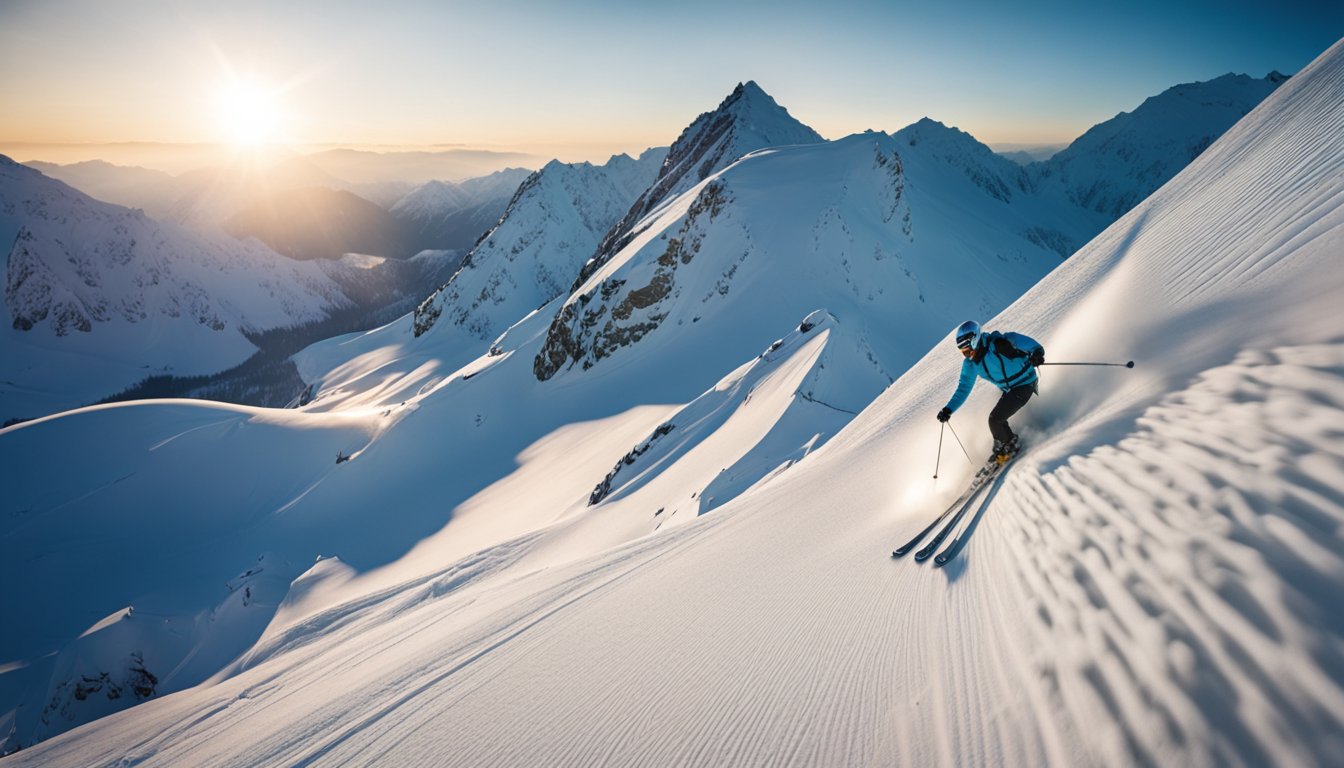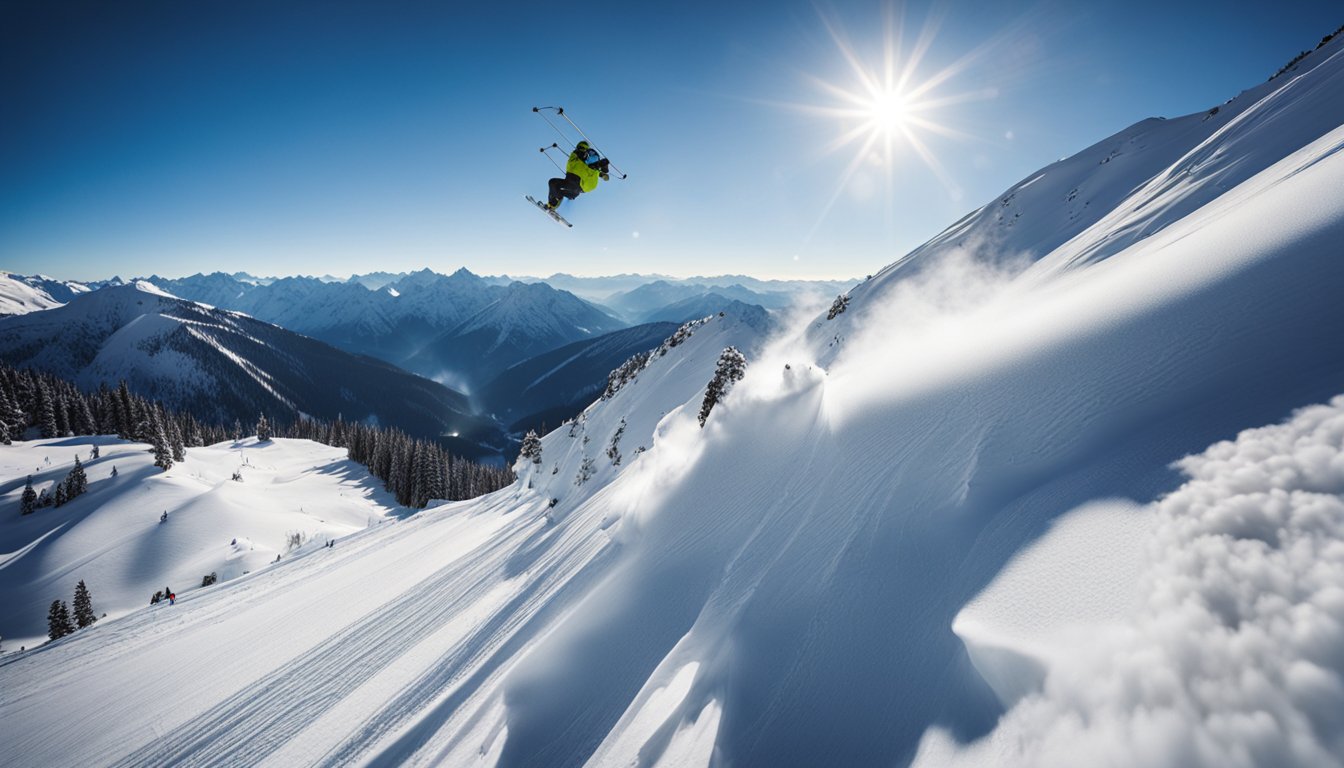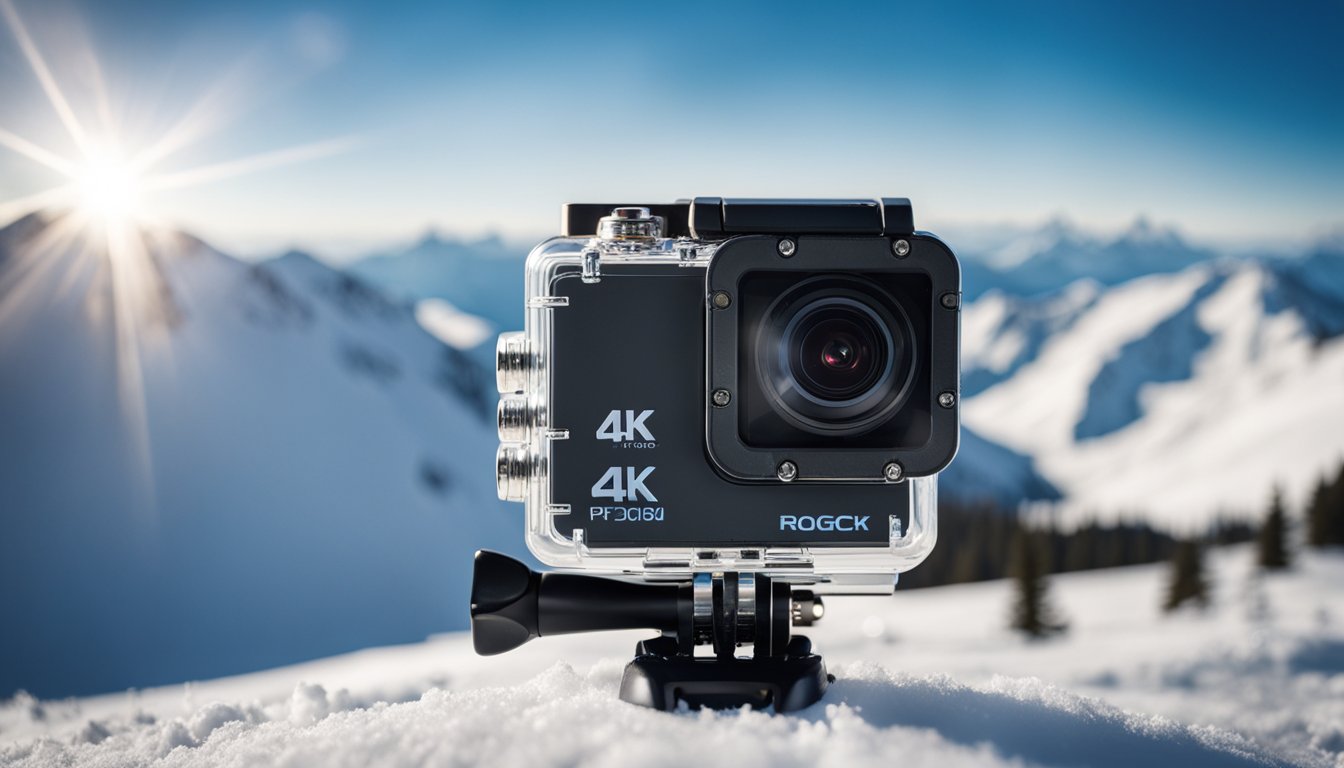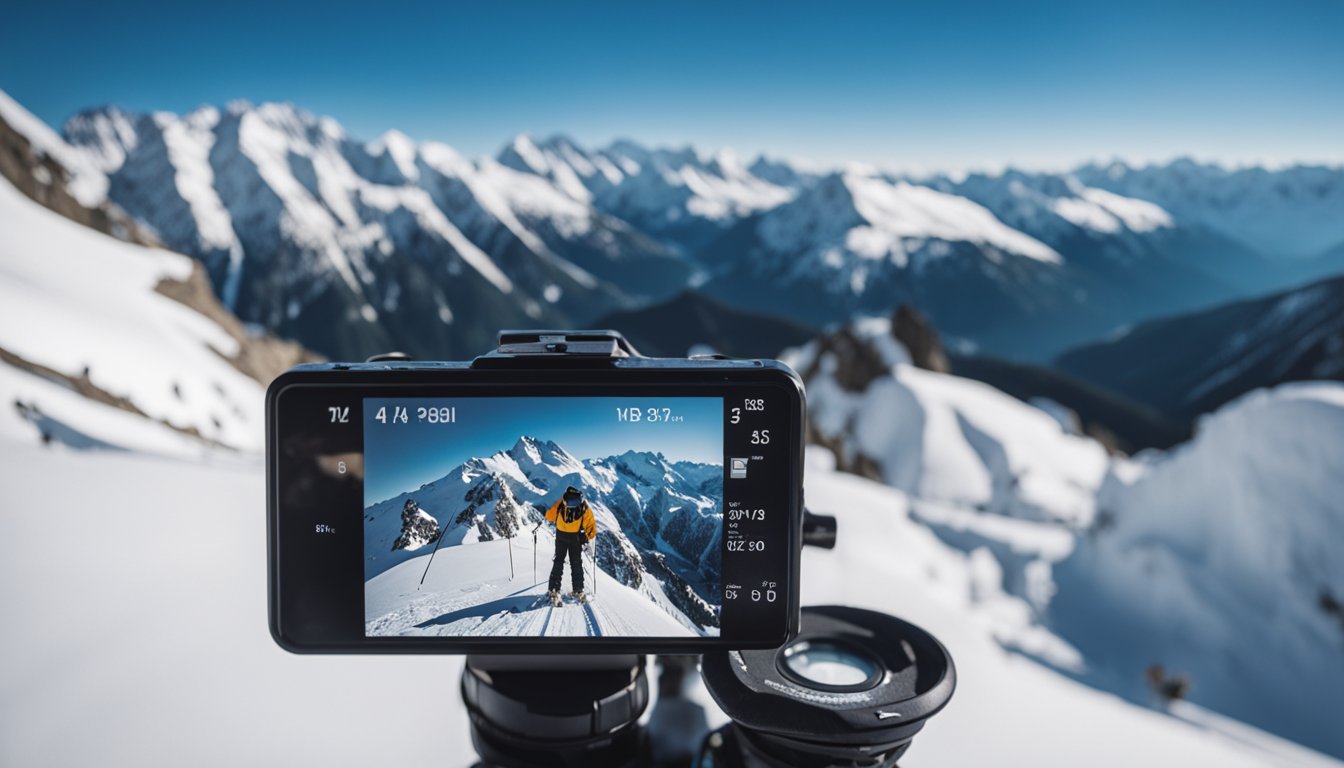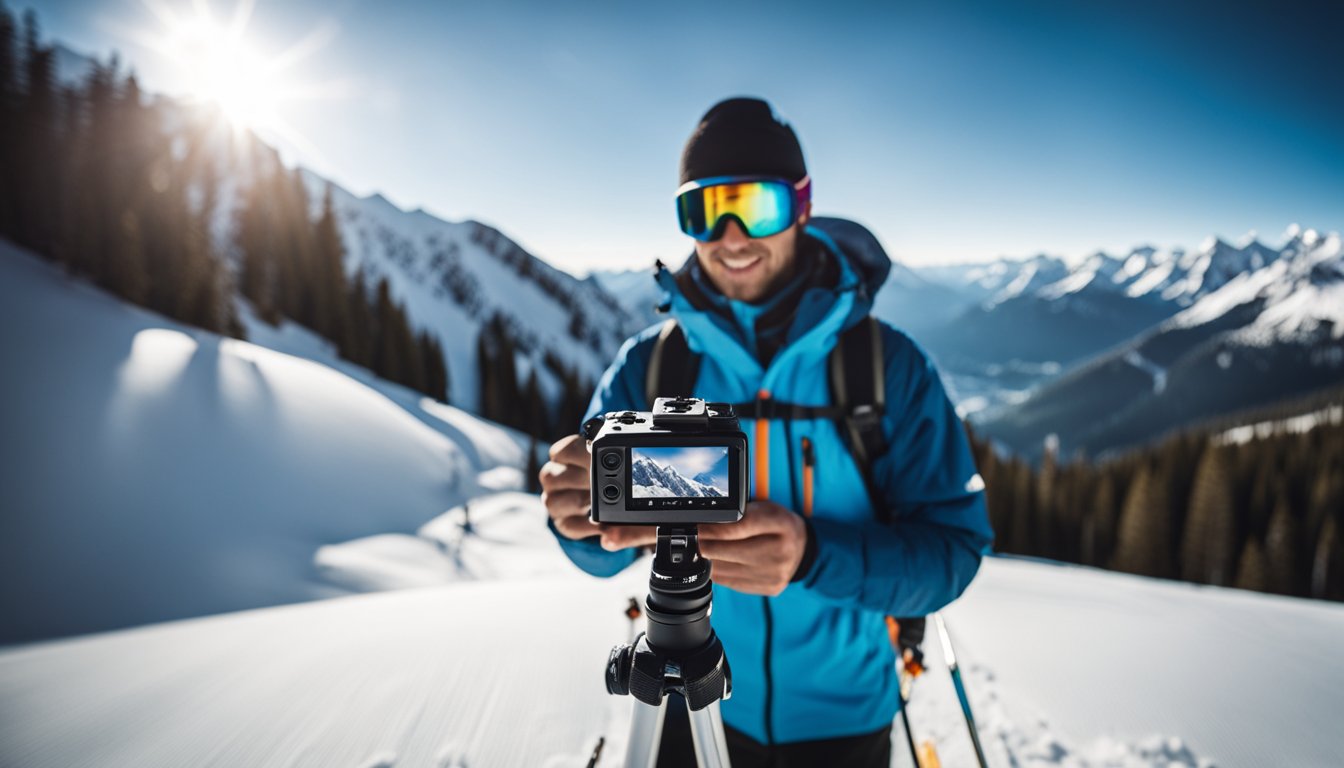If you’re an avid skier or snowboarder, you know how thrilling it can be to hit the slopes and capture your adventures. Whether you’re a professional videographer or just want to document your ski trip with friends, having the right camera is essential. While there are many cameras on the market, 360 cameras are becoming increasingly popular for skiing and snowboarding due to their ability to capture every angle of your experience.
360 cameras are great for skiing because they allow you to capture the entire mountain in a single shot. With a 360 camera, you can capture panoramic views of the slopes, your friends skiing beside you, and even yourself skiing down the mountain. Additionally, 360 cameras are designed to be compact and durable, making them perfect for outdoor activities like skiing and snowboarding.
When looking for the best 360 camera for skiing, there are a few top features to consider. These include things like image stabilization, resolution, and battery life. Additionally, you’ll want to look for a camera that is compatible with different mounting options, so you can easily attach it to your helmet or ski pole. With so many options on the market, it can be difficult to know where to start. In the next section, we’ll review some of the best 360 cameras for skiing to help you find the perfect camera for your needs.
Key Takeaways
- 360 cameras are becoming increasingly popular for skiing and snowboarding due to their ability to capture every angle of your experience.
- When looking for the best 360 camera for skiing, consider features like image stabilization, resolution, and battery life, as well as compatibility with different mounting options.
- Some of the best 360 cameras for skiing include the Insta360 One X2, GoPro Max, and Ricoh Theta V.
Why 360 Cameras Are Great for Skiing
https://www.youtube.com/watch?v=6-hXci3Vzqg&embed=true
If you are a skiing or snowboarding enthusiast, you know how exhilarating it is to hit the slopes and experience the rush of adrenaline. You want to capture every moment of your experience, from the panoramic views of the snow-covered mountains to the dynamic runs you take down the slopes. A 360 camera is the perfect tool for this job.
Capturing Panoramic Views
A 360-degree camera can capture panoramic views of the beautiful snow-covered mountains and the surrounding scenery. With a traditional camera, you can only capture a small portion of the view. However, with a 360 camera, you can capture everything around you, from the top of the mountain to the bottom of the valley. You can even capture the sky and the clouds above you. This allows you to relive the experience and share it with your friends and family.
Re-Living Dynamic Ski Runs
A 360-degree camera is perfect for capturing dynamic ski runs down the slopes. You can mount the camera on your helmet or ski pole and capture your runs from different angles. This allows you to relive the experience and analyze your technique. You can also share the video with your friends and family and show them how you conquered the slopes.

Overall, a 360 camera is a great tool for capturing your skiing and snowboarding experiences. It allows you to capture panoramic views and dynamic runs from different angles. With a 360 camera, you can relive your experience and share it with others.
Top Features to Consider in a Skiing Camera
When choosing a 360 camera for skiing, there are a few key features to keep in mind. Here are some of the most important ones:
Waterproof and Weatherproof Capabilities
Skiing is a wet and cold activity, so it’s important to choose a camera that can handle the elements. Look for a camera that is both waterproof and weatherproof. This will ensure that your camera can withstand snow, rain, and other harsh weather conditions. Many cameras are rated for certain depths and temperatures, so be sure to check the specifications before making your purchase.
Battery Life in Cold Conditions
Cold temperatures can drain your camera’s battery quickly, so it’s important to choose a camera with a long battery life. Look for a camera that is designed to work in cold conditions and has a battery that can last for several hours. Some cameras also come with spare batteries that you can swap out when needed.
Stabilization Technology
« Is MI 360 Camera Waterproof? Find Out Here
360 Camera Pose Ideas: Creative Ways to Capture Stunning Photos »
Skiing can be a bumpy and shaky activity, so it’s important to choose a camera with good stabilization technology. Look for a camera with image stabilization, flowstate stabilization, or horizon leveling. These features will help ensure that your footage is smooth and steady, even when you’re skiing on rough terrain. Some cameras also come with built-in gimbals or other stabilization accessories.
Overall, when choosing a 360 camera for skiing, it’s important to consider the camera’s waterproof and weatherproof capabilities, battery life in cold conditions, and stabilization technology. By keeping these features in mind, you can find a camera that will capture all of your skiing adventures in stunning detail.
Best 360 Cameras for Skiing Reviewed
https://www.youtube.com/watch?v=vcRPUiq5S9c&embed=true
If you’re looking for a camera that can capture your skiing adventures in stunning 360-degree videos, then you’re in luck. We’ve rounded up the best 360 cameras for skiing to help you choose the right one for your needs.
GoPro Max
The GoPro Max is a popular choice among skiers and snowboarders. It’s waterproof up to 16 feet and has excellent image stabilization, making it perfect for capturing smooth footage while you’re on the slopes. The camera can shoot 360-degree videos at up to 5.6K resolution and has a built-in touch screen for easy control. You can also use the GoPro app to edit and share your videos on the go.
Insta360 One X2
The Insta360 One X2 is another great option for skiing and snowboarding. It’s waterproof up to 10 meters and has excellent stabilization, even in rough terrain. The camera can shoot 360-degree videos at up to 5.7K resolution and has a built-in touch screen for easy control. You can also use the Insta360 app to edit and share your videos on the go.
Garmin Virb 360
The Garmin Virb 360 is a high-end camera that’s perfect for serious skiers and snowboarders. It’s waterproof up to 33 feet and has excellent image stabilization, making it perfect for capturing smooth footage while you’re on the slopes. The camera can shoot 360-degree videos at up to 5.7K resolution and has a built-in GPS for tracking your location and speed. You can also use the Garmin app to edit and share your videos on the go.
Olympus Tough TG-6
The Olympus Tough TG-6 is a rugged camera that’s perfect for skiing and snowboarding. It’s waterproof up to 50 feet and has excellent image stabilization, making it perfect for capturing smooth footage while you’re on the slopes. The camera can shoot 360-degree videos at up to 4K resolution and has a built-in compass and thermometer for tracking your location and temperature. You can also use the Olympus app to edit and share your videos on the go.
No matter which camera you choose, make sure it’s waterproof and has excellent image stabilization to ensure smooth footage while you’re on the slopes. With the right camera, you’ll be able to capture all of your skiing adventures in stunning 360-degree videos that you can share with your friends and family.
Mounting Options for Skiers
https://www.youtube.com/watch?v=0-LKPItFeu4&embed=true
If you’re planning to capture your skiing adventures with a 360 camera, you’ll need to consider the mounting options available to you. Here are two popular options to choose from:
Helmet Mounts
One of the most popular ways to mount a 360 camera while skiing is to attach it to your helmet. This allows you to capture a first-person perspective of your skiing experience, which can be especially thrilling. However, it’s important to make sure that the camera is securely attached to your helmet to prevent it from falling off during your run. There are several helmet mount options available, including adhesive mounts and strap mounts. Make sure to choose one that is compatible with your camera and helmet.
Pole and Selfie Stick Mounts
Another popular option is to mount your 360 camera on a pole or selfie stick. This allows you to capture a wider range of angles and perspectives, including shots of your surroundings and other skiers. However, it can be challenging to ski while holding a pole or selfie stick, so it’s important to choose a mount that is lightweight and easy to hold. You can also consider using a chest mount or backpack mount to keep your hands free while skiing.
When choosing a mount for your 360 camera, make sure to consider the type of skiing you’ll be doing, as well as your personal preferences and comfort level. It’s also important to choose a mount that is compatible with your camera and provides a secure attachment. With the right mount, you can capture amazing footage of your skiing adventures and share them with your friends and family.
Enhancing Your Videos with Software and Editing
https://www.youtube.com/watch?v=HdvFlaZLk24&embed=true
When it comes to creating stunning skiing videos, capturing the footage is only half the battle. The other half is editing and enhancing the footage to create a truly immersive experience for your viewers. With the right software and editing techniques, you can take your skiing videos to the next level.
AI Editing Features
One of the most exciting developments in video editing is the rise of artificial intelligence (AI) editing features. Many of the best 360 cameras for skiing come with built-in AI editing features that can automatically create stunning edits from your footage. For example, the Insta360 ONE X camera comes with an AI editing feature called “FlashCut,” which can automatically create short, action-packed edits of your skiing footage.
Using AI editing features can save you a lot of time and effort, and can help you create professional-looking edits even if you don’t have a lot of experience with video editing. However, it’s important to note that AI editing features are not perfect, and you may need to do some manual tweaking to get the perfect edit.
Reframing and Transitions
Another important aspect of video editing is reframing and transitions. With a 360 camera, you have the ability to capture footage from all angles, which means you can reframe your footage in post-production to create unique perspectives and angles. For example, you can use reframing to create a “follow cam” effect, where the camera appears to be following the skier down the slope.
In addition to reframing, transitions are also an important part of video editing. Transitions help to create a seamless flow between different shots, and can add a professional touch to your edits. When editing your skiing footage, try using different types of transitions, such as fades, wipes, and dissolves, to create a dynamic and engaging video.
Overall, with the right software and editing techniques, you can take your skiing videos to the next level. Whether you’re using AI editing features or manually reframing and adding transitions, the key is to experiment and have fun with your footage. With a little bit of creativity and effort, you can create stunning skiing videos that will impress your viewers.
Action Camera Durability and Protection
When skiing, you need an action camera that can withstand the harsh conditions of the mountain environment. Therefore, durability and protection are two essential factors to consider when choosing a 360 camera for skiing.
Shockproof Design
Falling on the snow is inevitable when skiing, and your action camera needs to be able to handle these impacts. A shockproof design will ensure that your camera can withstand accidental drops and impacts without getting damaged. Look for cameras that have a sturdy build and are made from durable materials that can absorb shock.
Weather-Sealed Construction
Skiing can expose your action camera to harsh weather conditions such as snow, wind, and cold temperatures. A weather-sealed construction will protect your camera from these elements, ensuring that it continues to function correctly even in extreme weather.
Look for cameras that have an IP rating of 6 or above, meaning they are dust-tight and can withstand powerful jets of water. Additionally, cameras with anti-fogging features will prevent the lens from fogging up in cold temperatures.
Overall, when choosing a 360 camera for skiing, ensure that it has a shockproof design and weather-sealed construction. These features will ensure that your camera can handle the harsh conditions of the mountain environment and capture high-quality footage of your skiing adventures.
Understanding Camera Specs for Quality Footage
https://www.youtube.com/watch?v=07x9yyui6UY&embed=true
When it comes to capturing your skiing adventures, having a 360 camera that can produce high-quality footage is essential. Understanding the different camera specs can help you choose the best camera for your needs.
4K Resolution and Frame Rate
One of the most important specs to consider when choosing a 360 camera for skiing is the camera’s resolution and frame rate. A camera that can record in 4K resolution will provide you with high-quality footage that is incredibly detailed and sharp. Additionally, a higher frame rate will allow you to capture fast-moving action more smoothly.
Image Quality and Megapixels
Another important spec to consider is the camera’s image quality and megapixels. A camera with a higher number of megapixels will produce sharper and more detailed images. Additionally, cameras with better image quality will produce footage with more accurate colors and better contrast.
When comparing cameras, it’s important to keep in mind that higher megapixels and image quality will result in larger file sizes. This means that you may need to invest in additional storage or memory cards to accommodate the larger files.
Overall, understanding the different camera specs can help you choose a 360 camera that will produce high-quality footage of your skiing adventures. By considering factors such as resolution, frame rate, image quality, and megapixels, you can find a camera that will meet your needs and help you capture all of your best moments on the slopes.
The Role of Accessories in Ski Videography
https://www.youtube.com/watch?v=aOQ0UCotzSY&embed=true
When it comes to capturing your skiing adventures on camera, having the right accessories can make all the difference. Not only can they improve the quality of your footage, but they can also help you overcome common challenges such as battery life and audio quality. Here are a few accessories to consider for your 360 camera setup:
Extended Batteries and Power Banks
One of the biggest challenges of shooting video on the slopes is battery life. Cold temperatures can drain your camera’s battery faster than usual, and you don’t want to run out of juice before you capture that perfect run. That’s where extended batteries and power banks come in.
Extended batteries are larger batteries that can replace the one that came with your camera. They offer more capacity, which means you can shoot for longer without needing to recharge. Power banks, on the other hand, are portable battery packs that you can use to charge your camera on the go. They’re especially useful if you’re planning a full day of skiing and don’t want to stop and recharge your camera mid-day.
Microphones and Audio Solutions
360 cameras are great for capturing immersive video, but they often struggle with audio quality. That’s because the microphones are usually built into the camera itself, and they’re not always positioned in the best spot to capture clear audio. If you want to improve the audio quality of your ski videos, consider investing in an external microphone.
There are a few different types of microphones to choose from, depending on your needs. A shotgun microphone, for example, is a directional microphone that can help you capture audio from a specific direction. A lapel microphone, on the other hand, is a small microphone that you can clip to your clothing. This can be a good option if you want to capture your own commentary while skiing.
Overall, accessories can help you overcome common challenges when shooting ski videos with your 360 camera. Whether you need to extend your battery life or improve your audio quality, there are plenty of options available to help you get the most out of your camera.
Innovative Features for the Best Shot
https://www.youtube.com/watch?v=iCHLlsTf77o&embed=true
If you’re looking for the best 360 camera for skiing, you want to make sure it has innovative features that will help you capture the best shot. Here are some of the features you should look for:
Gyro and Sensors
One of the most important features of a 360 camera for skiing is gyro and sensors. These features help stabilize the camera and reduce shakiness in your footage. Look for a camera with advanced gyro and sensors that can handle the fast-paced movements of skiing.
Voice Control and Remote Operation
When you’re skiing, you don’t want to have to stop and fiddle with your camera every time you want to take a shot. That’s why voice control and remote operation are so important. With these features, you can control your camera hands-free, using only your voice or a remote control.
Some cameras even come with a wrist-mounted remote control, so you can easily capture shots while you’re skiing down the mountain. Look for a camera with these features to make your skiing experience more enjoyable.
Angle of View
The angle of view is another important feature to consider when choosing a 360 camera for skiing. You want a camera that can capture a wide angle of view, so you can capture all the action around you. Look for a camera with a wide-angle lens that can capture at least 180 degrees.
In conclusion, when looking for the best 360 camera for skiing, you want to make sure it has gyro and sensors, voice control and remote operation, and a wide angle of view. With these features, you’ll be able to capture amazing footage of your skiing adventures.
Choosing the Right Camera for Other Winter Sports
Aside from skiing, there are other winter sports that you can enjoy. If you’re into snowboarding or skateboarding, you might also want to capture your adventures with a camera. Here are some things to consider when choosing the right camera for your winter sports:
Snowboarding
Snowboarding is a popular winter sport that requires a lot of movement and speed. If you’re planning to capture your snowboarding adventures, you’ll need a camera that can keep up with your movements. Look for a camera that has good stabilization features, such as the Insta360 X3 which has excellent stabilization and can shoot 360 videos. A 360 camera can also give you a wider field of view, which is perfect for capturing all the action.
Skateboarding
Skateboarding is another winter sport that requires a lot of movement and speed. When choosing a camera for skateboarding, look for one that is durable and can withstand impact. A camera with good image quality is also important, so you can capture all the details of your tricks. The GoPro Hero11 Black is a great option for skateboarding as it is durable and has excellent image quality.
No matter what winter sport you’re into, make sure to choose a camera that can keep up with your movements and capture all the action.
Frequently Asked Questions
What are the top features to look for in a 360 camera for skiing?
When looking for a 360 camera for skiing, there are several features to consider. Look for a camera that is waterproof, shockproof, and can withstand cold temperatures. A camera with good stabilization is also important to ensure smooth footage, and a long battery life is crucial for capturing your entire ski adventure. Additionally, a camera with high resolution and the ability to shoot in 360 degrees will give you the most immersive experience.
How does the GoPro Max compare to other 360 cameras for snow sports?
The GoPro Max is a popular choice for skiing due to its excellent image stabilization and rugged design. It can shoot in 360 degrees and has a waterproof and shockproof body, making it perfect for winter sports. However, other cameras such as the Insta360 ONE X2 and the Insta360 X3 also offer similar features and are worth considering.
What are the best mounting options for a 360 camera while skiing?
There are several options for mounting a 360 camera while skiing. A helmet mount is a popular choice as it allows you to capture footage from your point of view. A chest mount is also a great option for capturing a more stable image. Additionally, a selfie stick or a tripod can be used to capture footage from different angles.
Is the Insta360 X3 Snow Bundle worth it for ski enthusiasts?
The Insta360 X3 Snow Bundle is a great option for ski enthusiasts as it includes a waterproof case, a selfie stick, and other accessories. The X3 camera itself is also waterproof and has excellent stabilization, making it perfect for capturing your ski adventures. If you are looking for a complete package, the Snow Bundle is definitely worth considering.
How can I safely film myself while skiing with a 360 camera?
Safety should always be a top priority when filming yourself while skiing with a 360 camera. Make sure to choose a mount that is secure and won’t come loose while skiing. Additionally, be aware of your surroundings and avoid skiing too close to other people. Finally, make sure to wear proper safety gear such as a helmet and goggles.
What are the latest action camera trends for capturing ski adventures in 2023?
In 2023, action cameras are expected to continue to improve in terms of image quality and stabilization. Cameras with built-in AI and editing features are also becoming more popular, allowing for easier and faster editing of footage. Additionally, cameras with longer battery life and more robust designs are expected to become more common.

